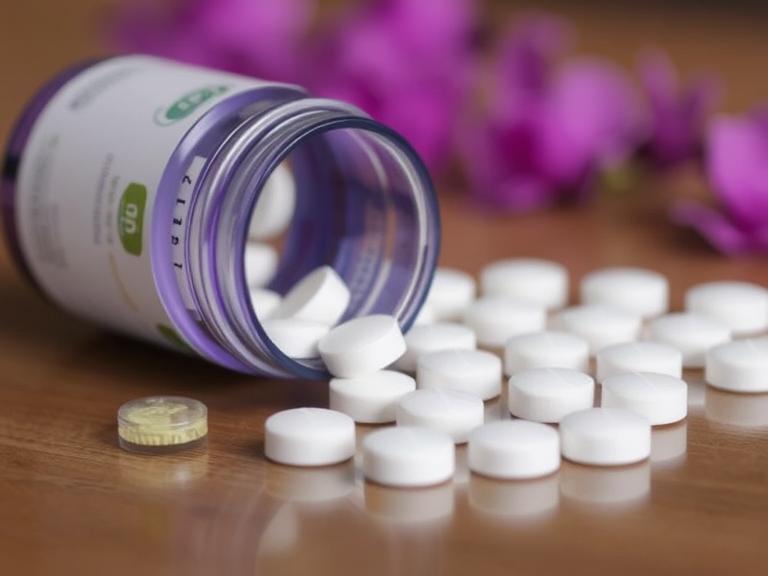Getting that coveted healthy, glowing skin isn’t just about genetics or expensive products; it’s a testament to consistent care, smart choices, and understanding what your skin truly needs. While the beauty industry constantly introduces new fads, the timeless secrets to a radiant complexion often lie in foundational habits and a holistic approach.
Here, we unveil 10 skin care secrets for healthier-looking skin that go beyond the surface, offering you a roadmap to unlock your skin’s natural brilliance.

Beyond the Surface: Understanding Healthy Skin
Before diving into the secrets, let’s understand what “healthy skin” truly signifies. It’s not just about being blemish-free; it’s about skin that’s:
- Resilient: Able to protect itself from environmental aggressors.
- Well-hydrated: Plump, soft, and supple.
- Even-toned: Free from excessive redness, dark spots, or uneven texture.
- Functioning optimally: With a strong skin barrier that keeps good things in and bad things out.
Achieving this requires a blend of external care and internal nourishment.
The 10 Skin Care Secrets for Healthier-Looking Skin
1. Master the Art of Gentle Cleansing
Your day starts and ends with cleansing. It’s the most fundamental step.
- Why it’s a secret: Over-cleansing or using harsh products can strip your skin’s natural oils, compromising its barrier and leading to dryness, irritation, or even breakouts.
- How to do it: Wash your face twice daily (morning and night) with a mild, pH-balanced cleanser and lukewarm water. Gently massage the cleanser into your skin for about 60 seconds. Avoid abrasive scrubs or excessively hot water.
2. Hydration is Your Skin’s Best Friend (Inside & Out)
Skin that lacks moisture looks dull, feels tight, and is more prone to wrinkles.
- Why it’s a secret: Hydration plumps up skin cells, strengthens the barrier, and improves elasticity.
- How to do it:
- Internal: Drink plenty of water throughout the day. Aim for 8-10 glasses.
- External: Use a good moisturizer morning and night, immediately after cleansing or applying serums. Choose a formula suited to your skin type:
- Oily skin: Look for gel-based or oil-free lotions.
- Dry skin: Opt for richer creams with ingredients like ceramides, shea butter, or squalane.
- Normal/Combination skin: A lightweight lotion or gel-cream with hyaluronic acid and glycerin.
3. Sun Protection is Non-Negotiable (Every Single Day)
The sun is the leading cause of premature aging, dark spots, and skin cancer.
- Why it’s a secret: Consistent sun protection shields your skin from harmful UV radiation, preventing collagen breakdown, hyperpigmentation, and cellular damage.
- How to do it: Apply a broad-spectrum sunscreen with an SPF of 30 or higher every single morning, rain or shine, even indoors if near windows. Reapply every two hours when outdoors, or after sweating/swimming.
4. Exfoliate Wisely, Not Wildly
Exfoliation removes dead skin cells, revealing brighter, smoother skin beneath.
- Why it’s a secret: Over-exfoliating can damage your skin barrier, leading to redness and sensitivity. Under-exfoliating can lead to dullness and clogged pores.
- How to do it: Determine your skin type.
- Chemical exfoliants (AHAs, BHAs) are often gentler and more effective for most skin types, especially acne-prone or sensitive skin.
- Physical exfoliants (scrubs) should be very fine-grained and used sparingly.
- Start with 1-2 times a week and adjust based on your skin’s response, typically not more than 3 times a week.
5. Prioritize Quality Sleep
“Beauty sleep” is not a myth; it’s a crucial time for skin repair.
- Why it’s a secret: During sleep, your skin’s blood flow increases, collagen is rebuilt, and cellular repair and regeneration are in overdrive. Lack of sleep can lead to dullness, dark circles, and increased stress hormones (cortisol) which can trigger inflammation and breakouts.
- How to do it: Aim for 7-9 hours of quality sleep per night. Ensure your pillowcases are clean (change them weekly) to avoid transferring dirt and oils back to your skin.
6. Nourish Your Skin from Within (Diet Matters)
What you eat directly impacts your skin’s health and appearance.
- Why it’s a secret: A nutrient-rich diet provides the building blocks and protection your skin needs.
- How to do it:
- Eat plenty of antioxidants: Berries, leafy greens, tomatoes, green tea, pomegranates, and carrots fight free radical damage.
- Include healthy fats: Omega-3 fatty acids from salmon, flaxseeds, and walnuts reduce inflammation and support skin barrier function.
- Limit processed foods, excessive sugar, and refined carbohydrates: These can contribute to inflammation and accelerate skin aging.
- Support your gut health: A healthy gut microbiome is increasingly linked to clear, healthy skin.
7. Manage Stress Effectively
Stress isn’t just mental; it manifests physically, especially on your skin.
- Why it’s a secret: Chronic stress leads to increased cortisol levels, which can trigger acne breakouts, exacerbate conditions like eczema and psoriasis, and impair wound healing.
- How to do it: Incorporate stress-reducing activities into your daily routine: meditation, yoga, deep breathing exercises, spending time in nature, pursuing hobbies, or simply taking short breaks.
8. Don’t Forget Your Neck and Decolletage
These areas often show the first signs of aging but are frequently neglected.
- Why it’s a secret: The skin on your neck and chest is thinner and more delicate, making it prone to sun damage and wrinkles.
- How to do it: Extend your entire skincare routine – cleansing, serums, moisturizer, and especially sunscreen – down to your neck and décolletage daily.
9. Be Consistent and Patient
Skincare is a journey, not a destination.
- Why it’s a secret: Skin cell turnover cycles take approximately 28 days (longer as you age). You won’t see results overnight. Consistent application of products and habits is key for long-term improvement.
- How to do it: Stick to a simple, effective routine daily. Give new products at least 4-6 weeks before judging their efficacy.
10. Seek Professional Guidance When Needed
Sometimes, skin concerns require expert intervention.
- Why it’s a secret: A dermatologist can diagnose underlying conditions, prescribe stronger treatments, or offer in-office procedures that aren’t available over-the-counter. An esthetician can provide personalized advice, professional facials, and targeted treatments.
- How to do it: Don’t hesitate to consult a dermatologist for persistent acne, chronic redness, unusual moles, or skin conditions that don’t respond to your routine. An esthetician can help with maintenance and general skin health.
Beyond the Routine: A Holistic Approach to Radiant Skin
Ultimately, healthier-looking skin is a reflection of your overall well-being. It’s a holistic endeavor that intertwines what you put on your skin with how you live your life. By embracing these 10 skin care secrets, you’re not just treating symptoms; you’re building a foundation for lasting skin health and radiance.
For personalized skincare routines, addressing specific concerns, or managing complex skin conditions, consulting with a certified dermatologist or a Top Health Coach specializing in holistic wellness is invaluable. They can provide tailored advice that considers your unique skin type, lifestyle, and health conditions. Additionally, for a wealth of reliable information on skincare trends, ingredients, and expert tips, many leading beauty and health blogs and Guest Posting Website platforms offer a treasure trove of articles, providing accessible insights to empower your journey to healthier-looking skin.
20 FAQs About Achieving Healthier-Looking Skin
1. What is the ideal daily skincare routine? A basic routine includes: Morning – gentle cleanser, serum (optional), moisturizer, SPF. Evening – gentle cleanser, treatment serum (optional), moisturizer.
2. How often should I wash my face? Twice a day: once in the morning and once at night. More often can strip your skin’s natural oils.
3. What type of cleanser should I use? Choose a gentle, pH-balanced cleanser suitable for your skin type (e.g., foaming for oily, creamy for dry, gel for combination).
4. Is toner necessary? Not always. Modern toners are often hydrating or exfoliating, but not strictly necessary if your other products provide those benefits. Avoid alcohol-based toners.
5. How do I choose the right moisturizer for my skin type?
- Oily: Lightweight, gel-based, oil-free, non-comedogenic.
- Dry: Richer creams with ceramides, hyaluronic acid, shea butter.
- Combination: Lightweight lotions or gel-creams for balanced hydration.
- Sensitive: Fragrance-free, hypoallergenic, with soothing ingredients like aloe or colloidal oatmeal.
6. What SPF level do I need daily? A broad-spectrum SPF 30 or higher, applied daily, even on cloudy days or indoors near windows.
7. Can sunscreen prevent acne? Sunscreen itself doesn’t prevent acne, but sun damage can worsen hyperpigmentation from breakouts. Choose non-comedogenic sunscreens if you’re acne-prone.
8. How often should I exfoliate? 1-3 times a week, depending on your skin type and sensitivity. Start with once a week and adjust.
9. What’s the difference between chemical and physical exfoliants?
- Physical: Use small grains or brushes to manually scrub away dead skin cells (e.g., scrubs).
- Chemical: Use acids (like AHAs, BHAs) or enzymes to dissolve dead skin cells without scrubbing. Generally considered gentler and more effective for most.
10. How does sleep affect my skin? During sleep, your skin repairs itself, produces collagen, and has increased blood flow. Lack of sleep can lead to dullness, dark circles, fine lines, and increased inflammation.
11. What foods are good for skin health? Antioxidant-rich fruits (berries, oranges), vegetables (spinach, kale, bell peppers), healthy fats (avocado, nuts, fatty fish), and whole grains.
12. What foods are bad for skin health? Excessive sugar, refined carbohydrates (white bread, pasta), processed foods, and unhealthy fats can contribute to inflammation and skin issues like acne or premature aging for some.
13. Can stress cause breakouts? Yes, stress increases cortisol levels, which can stimulate oil production, leading to clogged pores and breakouts, and can worsen existing skin conditions.
14. How do I know my skin type? Wash your face and wait 30 minutes without applying any products.
- Oily: Shiny all over.
- Dry: Feels tight, flaky, or rough.
- Combination: Oily T-zone (forehead, nose, chin) and dry/normal cheeks.
- Normal: Feels balanced, neither oily nor dry.
- Sensitive: Reacts easily with redness, itching, or stinging.
15. When should I start using anti-aging products? Prevention starts early. Sunscreen should be used from childhood. Ingredients like antioxidants can be introduced in your 20s. Retinoids can be considered in your mid-20s to early 30s as collagen production starts to decline.
16. Is it okay to use multiple active ingredients in my routine? Yes, but carefully. Introduce one new active at a time, and avoid layering too many strong actives (e.g., multiple exfoliants, or high-strength Vitamin C with Retinoids) on the same night without expert guidance, as this can cause irritation.
17. How long does it take to see results from a new skincare routine? Generally, at least 4-6 weeks for noticeable changes, as skin cell turnover takes time. For concerns like acne or hyperpigmentation, it can take 2-3 months or longer.
18. Can too much skincare harm my skin? Absolutely. Overloading your skin with too many products, especially strong active ingredients, can damage your skin barrier, leading to irritation, redness, dryness, or even increased breakouts. Simplify if your skin feels overwhelmed.
19. How often should I change my pillowcase for better skin? Ideally, change your pillowcase weekly, or more frequently if you have acne-prone skin, to minimize the buildup of dirt, oil, bacteria, and old product residue.
20. When should I see a dermatologist? Consult a dermatologist for persistent or severe acne, chronic rashes, unexplained skin changes, suspicious moles, hair loss, or if your skin condition significantly impacts your quality of life and isn’t responding to over-the-counter solutions.



